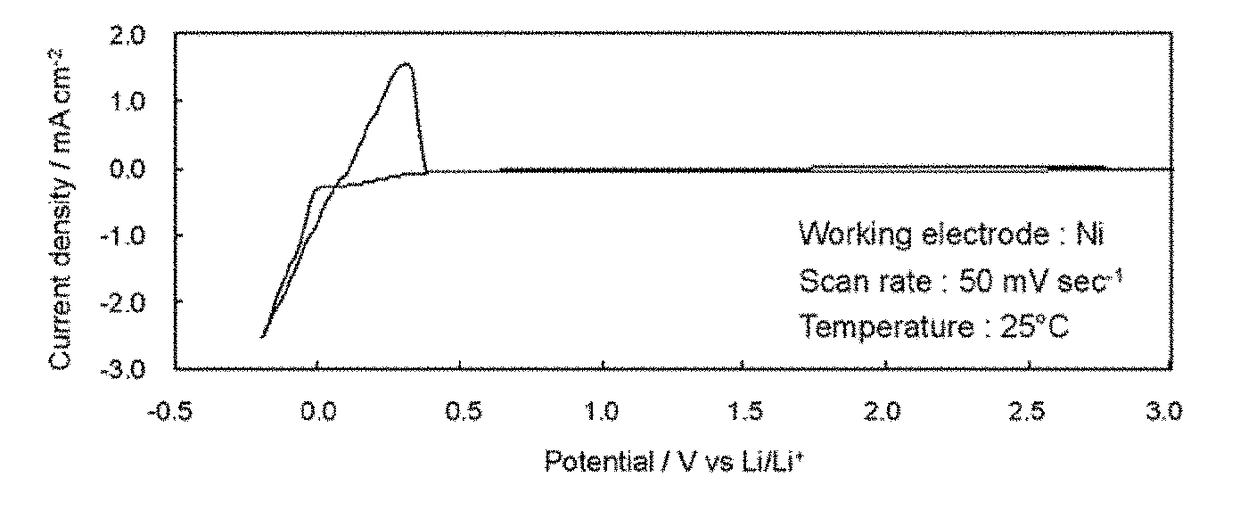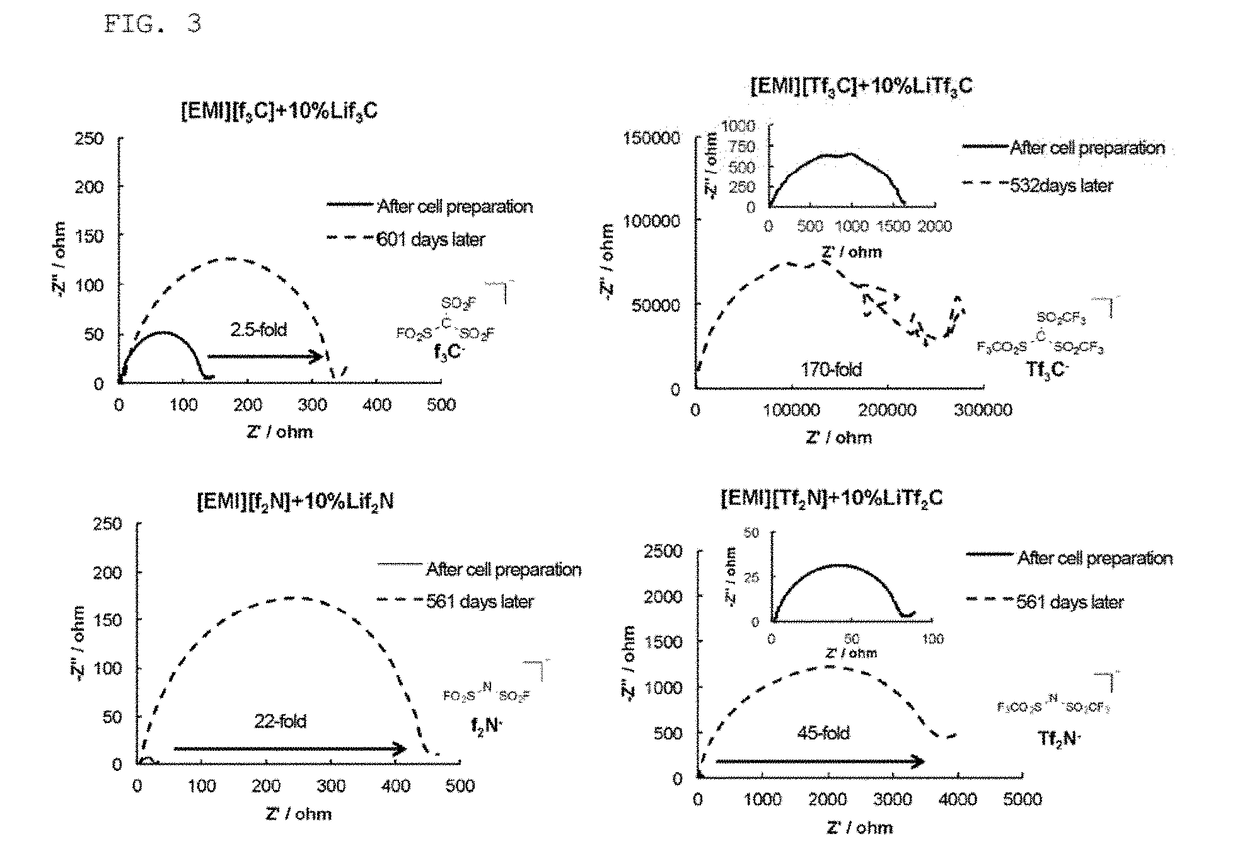Ionic liquid and plastic crystal
a technology of ionic liquid and plastic crystal, which is applied in the direction of positive electrodes, cell components, electrochemical generators, etc., can solve the problems of reducing the overall capacity, consuming electrical power for cooling lithium secondary batteries, and being susceptible to impact, so as to reduce the need for cooling, reduce the viscosity of electrolyte, and reduce the need for storage efficiency per unit volume
- Summary
- Abstract
- Description
- Claims
- Application Information
AI Technical Summary
Benefits of technology
Problems solved by technology
Method used
Image
Examples
production example 1
Synthesis of Anion (f3C)
[0076]Compound (2) (58.4 mg), which is a commercially available product obtained from Alcatraz Chemicals (Gujarat, India), was reacted with 194 mg of SF4 to obtain 51.6 mg of compound (3). Then, 92.4 mg of compound (3) was reacted with an excess amount of potassium carbonate to form 93.9 mg of potassium salt (4) comprising f3C anion.
example 1
[0077]Potassium salt (4) comprising f3C anion obtained id Production Example 1 was reacted with an equimolar bromide of [EMI]+, [DEME]+, [Py13]+, or [PP13]+ to perform cation exchange. In this manner, a target ionic liquid ([EMI] [f3C]) of the present invention and target plastic crystals ([DEME] [f3C], [Py13] [f3C], and [PP13] [f3C]) of the present invention were obtained.
[0078]The following shows the physical property values of the obtained ionic liquid and plastic crystals. Table 1 shows the melting point, glass transition temperature, and solid-solid phase transition temperature.
1) [EMI] [f3C]
1H-NMR (CD3CN, 300 MHz): δ=1.45 (t, J=7.2 Hz, 3H), 3.81 (s, 3H), 4.16 (q, J=7.2 Hz, 2H), 7.32 (s, 1H), 7.37 (s, 1H), 8.39 (s, 1H): 19F-NMR (CD3CN, 283 MHz): δ=71.5 (s, 3F).
Elemental analysis values (theoretical values): H 2.99% (2.98%); C 22.71% (22.58%); N 7.58% (7.52%); F 15.36% (15.31%). Ionic conductivity at 25° C.: 6.2 mS cm−1. Viscosity at 25° C.: 39 mPa·s. Density at 25° C.: 1.55 g m...
example 2
[0079]Potassium salt (4) comprising f3C anion obtained in Production Example 1 was reacted with an equimolar bromide of [N6111]+, [N6222]+, [N1111]+, [N2222]+, [Py12]+, [C4mim]+, and [C6mim]+ to perform cation exchange. In this manner, target ionic liquids of the present invention [N6111] [f3C], [N6222]+ [f3C], [N1111] [f3C], [N22222] [f3C], [PP14] [f3C], [Py12] [f3C], [Py14] [f3C], [C1mim] [f3C], [C4mim] [f3C], and [C6mim] [f3C] were obtained. The following shows the physical property values of the obtained ionic liquids or plastic crystals. Table 1 shows the melting point, glass transition temperature, and solid-solid phase transition temperature.
1) [N1111] [f3C]
1H NMR (DMSO-d6, 300 MHz): δ=3.06 (s, 12H); 19F NMR (DMSO-d6, 283 MHz): δ=71.9 (s, 3F).
Thermal-decomposition temperature (at the time of 10% reduction): 348° C.
2) [N2222] [f3C]
1H NMR (CDCl3, 300 MHz): δ=1.35 (t, J=7.2 Hz, 4×3H), 3.23 (q, J=7.2 Hz, 4×2H); 19F NMR (CDCl3, 283 MHz): δ=71.2 (s, 3F).
Thermal-decomposition temper...
PUM
 Login to View More
Login to View More Abstract
Description
Claims
Application Information
 Login to View More
Login to View More - R&D
- Intellectual Property
- Life Sciences
- Materials
- Tech Scout
- Unparalleled Data Quality
- Higher Quality Content
- 60% Fewer Hallucinations
Browse by: Latest US Patents, China's latest patents, Technical Efficacy Thesaurus, Application Domain, Technology Topic, Popular Technical Reports.
© 2025 PatSnap. All rights reserved.Legal|Privacy policy|Modern Slavery Act Transparency Statement|Sitemap|About US| Contact US: help@patsnap.com



